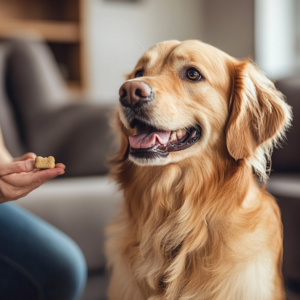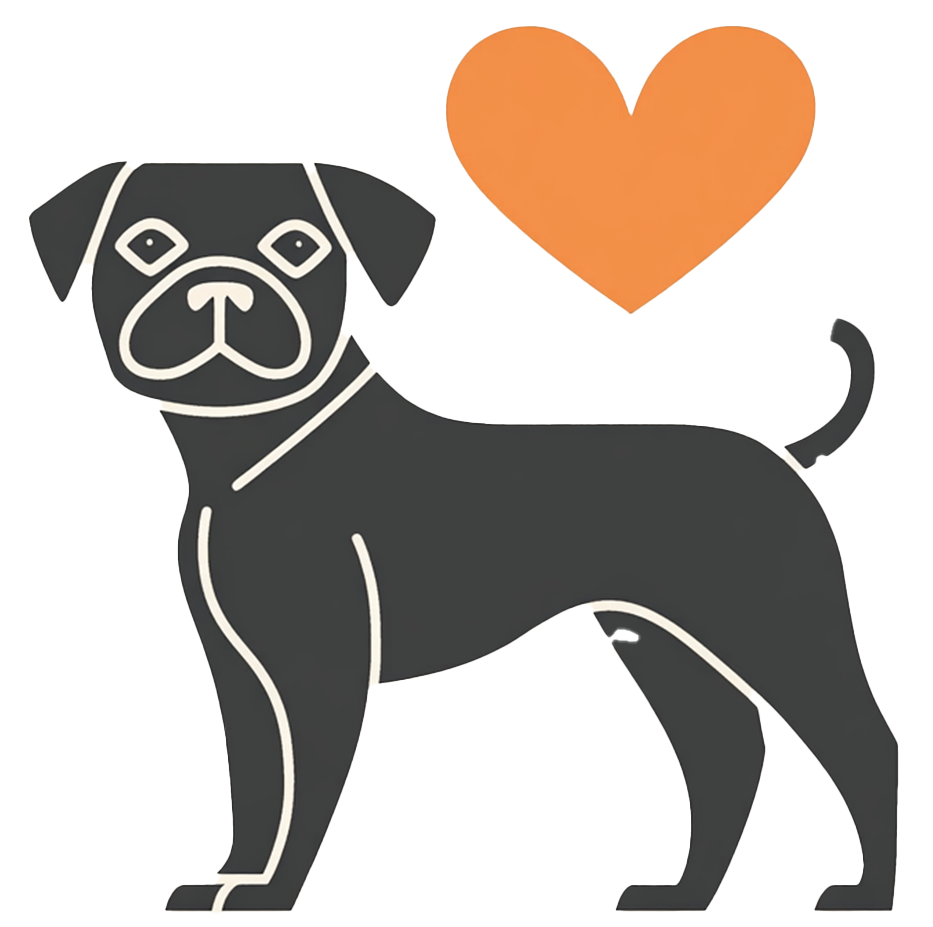Excessive barking can be one of the most frustrating behaviors for dog owners, turning peaceful moments into a noisy ordeal. While barking is a natural way for dogs to communicate, constant barking can quickly become a challenge. But here’s the good news: there are humane, effective ways to manage it. One of the most reliable methods? Treat-based training! 🍖
In this post, we’ll explore why dogs bark, the science behind positive reinforcement, and step-by-step tips for using treats to stop excessive barking. Let’s dive into how you can turn noisy chaos into calm, all while bonding with your furry friend!
Understanding Why Dogs Bark
Barking is as natural for dogs as talking is for us. But when barking becomes constant or disruptive, it’s a sign that something needs addressing. To fix the issue, it’s crucial to first understand why your dog is barking in the first place.
Different Types of Barking
Dogs bark for various reasons, and each type of bark can tell you something about what’s going on in their head. Here are some common reasons dogs bark excessively:

- Territorial Barking: Your dog may bark when someone approaches their territory (like the postman or a neighbor).
- Attention-Seeking Barking: Some dogs bark simply to get your attention. If you’ve ever had a dog stare at you and bark until you respond, you know exactly what this looks like!
- Boredom Barking: If dogs don’t get enough exercise or mental stimulation, they may bark out of frustration or boredom.
- Fear or Anxiety: Dogs may bark when they feel scared or anxious, especially when they’re left alone (this is common with separation anxiety).
- Excitement Barking: Dogs often bark when they’re overly excited, whether it’s because they’re going on a walk, seeing a friend, or simply bursting with energy!
By understanding the type of barking your dog is displaying, you’ll be better equipped to address the root cause. Lando, for example, tends to bark out of excitement—especially when he’s about to go on a walk. Meanwhile, Nico is more of a territorial barker, letting everyone know when someone’s approaching the house! 🐾
The Power of Positive Reinforcement
When it comes to training dogs, positive reinforcement is one of the most effective and humane methods. Rather than punishing bad behavior, you reward the good. Dogs are eager to please, and using rewards like treats can make the training process faster and more enjoyable for both of you.
Why Treat-Based Training Works
Why do treats work so well? It’s simple—most dogs are food-motivated! Treats help create a positive association with good behavior. When your dog barks, and you reward them when they stop, you’re teaching them that being quiet leads to something positive (like a yummy snack). Over time, they’ll learn that staying quiet is more rewarding than barking.
When I first started training Nico, I was amazed by how quickly he picked up on what I was asking—especially when treats were involved. Lando, on the other hand, needed a bit more patience. With his high energy, it took some time for him to calm down enough to focus on the training, but once he got it, there was no stopping him! 🎉
Here’s why treat-based training works so well:
- It provides immediate positive feedback for good behavior.
- Treats motivate your dog to follow commands.
- It helps build a bond between you and your dog through positive experiences.

Step-by-Step Guide to Using Treats to Stop Barking
Now that we’ve covered the reasons behind barking and the power of positive reinforcement, let’s get into the practical side—how to use treats to stop excessive barking. This method is all about being consistent and using timing effectively.
1. Identify the Cause of Barking
Before you can train your dog to stop barking, you need to figure out why they’re barking in the first place. Is it boredom, anxiety, or are they trying to protect their territory? Knowing the cause will help you approach the situation with the right mindset.
For example, if your dog barks out of boredom, increasing their exercise and playtime can help. If it’s fear-related barking, you might need to work on desensitizing them to the things that scare them. Once you understand what’s causing the barking, you can tailor your training approach accordingly.
2. Reward Quiet Behavior
This is where treats come in! The goal is to teach your dog that quiet behavior leads to rewards, while barking does not. Here’s how you can do it:
- Wait for a moment when your dog is quiet (even if it’s just for a second).
- Immediately give them a treat and praise them with a calm “good quiet” or “good job!” 😊.
- Repeat this process, gradually waiting for longer quiet periods before giving a treat.
It’s important to catch your dog in the act of being quiet. If they start barking again after the treat, don’t give them another one until they’ve calmed down. Consistency is key here—your dog needs to understand that quiet equals treats.
With Lando, I found that starting with very short periods of quiet worked best. I’d reward him for just a few seconds of calm before gradually extending the time. Now, he knows that being quiet gets him a snack! 🦴
3. Timing and Consistency Are Key
The success of treat-based training relies on timing and consistency. Here’s what you need to keep in mind:
- Timing: You need to reward your dog the moment they stop barking. If you wait too long, they may not connect the quiet behavior with the treat.
- Consistency: Be consistent with the rules. If you only reward quiet behavior sometimes, your dog might get confused about what you want from them. Make it a habit to reward them every time they stay quiet.
Consistency has been a lifesaver with Nico. As he’s older and more set in his ways, it took a little longer to get him used to the idea of being rewarded for silence. But once we found our groove, his barking became far more manageable. It’s really all about sticking with it!
4. Avoid Encouraging Bad Habits
It’s easy to accidentally reinforce the very behaviors you’re trying to change, especially when treats are involved. To prevent your dog from developing bad habits during training, it’s important to be mindful of how and when you’re giving out treats.
Here are a few things to watch out for:

- Don’t reward barking: It might sound obvious, but sometimes we unknowingly give treats when a dog is still barking—maybe because we’re eager to calm them down. However, this can send mixed messages. Only give treats when your dog is calm and quiet.
- Avoid giving in to demand barking: Some dogs learn that barking gets them what they want, whether it’s attention, food, or playtime. If your dog barks to demand a treat, wait until they stop before offering it. This teaches them that quiet patience is rewarded, not noisy demands.
- Be aware of your timing: Timing is everything when it comes to training. If your dog is quiet, but you give them a treat right as they’re about to bark again, they might think they’re being rewarded for the barking. Stay consistent and give the treat only when they’re completely calm.
With Lando, there were a few times I caught myself accidentally giving him a treat while he was in the middle of barking. 🙈 It’s all part of the learning process, though! The key is to recognise these slip-ups and adjust your timing so that your dog gets the right message.
When to Seek Professional Help
While treat-based training can be highly effective for most dogs, there are situations where professional help may be necessary. If your dog’s barking is severe or linked to deeper behavioral issues, such as anxiety or aggression, it might be time to consult a dog trainer or behaviorist.
Here are a few signs that professional help could be needed:
- Severe separation anxiety: If your dog barks incessantly when left alone and exhibits other signs of anxiety (like destructive behavior or accidents in the house), they may need a more specialized approach than at-home training can offer.
- Aggressive barking: If your dog’s barking is accompanied by growling, lunging, or biting, it could be a sign of aggression. This can be dangerous, and a professional trainer will be able to help manage these behaviors safely.
- Inability to make progress: If you’ve been using treats and positive reinforcement consistently but aren’t seeing any improvement after a few weeks, a trainer may help you fine-tune your approach or uncover deeper issues.
Sometimes it’s okay to admit that our furry friends need a little extra help. Nico, for instance, had some territorial barking that I just couldn’t seem to curb on my own, so I consulted a trainer. They provided a few additional strategies and some tips for managing his environment that worked wonders! 🐕🦺
Bonus Tips for Successful Treat-Based Training
To make sure your treat-based training is as effective as possible, here are a few extra tips that can help you along the way:
Use High-Value Treats
Not all treats are created equal—at least in the eyes of your dog! Some treats, like regular kibble or biscuits, may not be motivating enough to keep your dog focused on the task at hand. For training purposes, it’s best to use high-value treats that your dog absolutely loves. Soft, small, and tasty treats tend to work best because your dog can eat them quickly and get back to training.
- Examples of high-value treats include small pieces of chicken, cheese, or store-bought training treats.
- Switch up the treats occasionally to keep your dog’s interest high.
- Make sure the treats are easy to eat so your dog isn’t distracted by chewing!
For Lando, nothing beats a good piece of chicken. 🍗 Nico, on the other hand, will do anything for cheese! 🧀 Knowing what motivates your dog makes a world of difference during training sessions.
Keep Training Sessions Short
Dogs, like humans, can lose focus if training sessions drag on too long. When using treats to stop barking, keep sessions short and positive. Aim for 5-10 minute training sessions, a few times a day, especially when your dog is just starting out.
Here’s a quick structure for an effective session:
- Warm-up: Start with a few basic commands that your dog already knows (like “sit” or “stay”) to get them focused.
- Training focus: Use treats to reward quiet behavior, following the steps outlined earlier.
- End on a high note: Always finish with something your dog excels at, and give them a big reward to end the session on a positive note.
Short, successful sessions keep your dog motivated and make them excited for the next one. Lando’s short attention span means that keeping training brief is essential for us, while Nico tends to enjoy longer, more focused sessions. Tailoring the length of the training to your dog’s personality is key.
Use Treats Wisely
It’s important to be strategic with how you use treats during training. While treats are a powerful motivator, you don’t want to rely on them forever. Over time, you should gradually reduce the number of treats and replace them with verbal praise, pats, or playtime.
Here’s how to start phasing out treats:
- Begin by giving a treat every time your dog is quiet.
- As your dog improves, start rewarding every other time, then every third time, and so on.
- Eventually, the treat will become a special bonus, rather than an expectation, and your dog will respond to other forms of praise.
With Lando, I’ve noticed that he responds just as well to a “good boy!” and a belly rub as he does to a treat, but only after he got the hang of things. Nico, being the calmer and more mature one, needed fewer treats from the start.
Conclusion
Training your dog to stop excessive barking using treats is not only effective but also a great way to strengthen the bond between you and your furry friend. 🐶 By understanding the reasons behind the barking, using positive reinforcement, and staying consistent, you’ll find that your dog’s barking can be managed in a way that’s stress-free for both of you.
Remember, patience is key. No dog will learn overnight, but with the right approach, your dog will soon understand that quiet behavior leads to treats—and a happy owner! Whether you’re dealing with a high-energy pup like Lando or a steady old soul like Nico, treat-based training can work wonders.
If you’ve got any tips or success stories of your own, feel free to share them in the comments below. We’d love to hear how you’re getting on with your four-legged friends! 🦴🐕





